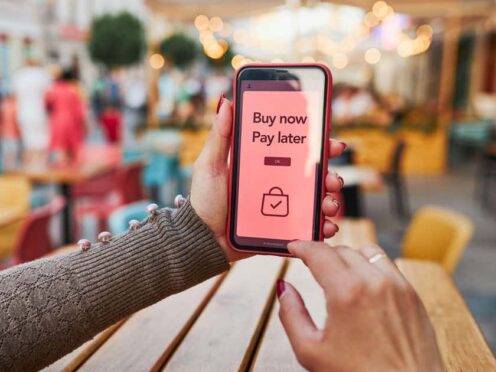A Treasury minister has warned over a “computer says no” attitude towards buy now, pay later arrangements in the face of demands to regulate the sector.
Many people used the short-term financing facility to purchase goods “very successfully”, said Baroness Vere of Norbiton as she stressed the need to strike the right balance and for any rules to be proportionate.
The Tory frontbencher said the option to spread the cost in interest-free instalments was “incredibly helpful to people” and outstanding balances were “relatively small”.
However, concerns have been raised of consumers finding themselves in debt and being hit with late repayment charges, which can affect their credit score.
The Government is considering feedback to a consultation on regulating buy now, pay later schemes.
Lady Vere said: “In many cases, when provided affordably and used responsibly, interest-free credit can be incredibly helpful to people trying to balance certain payments from month to month.
“The average outstanding balance of buy now, pay later is £236.
“These are relatively small amounts of money that can be shifted from month to month, and it is proving incredibly useful to a number of people.”
Green Party peer Baroness Bennett of Manor Castle highlighted research that found nearly a quarter of buy now, pay later users had been landed with late payment fees, with that figure rising to 34% for younger consumers.
She said: “Is this not just one more way of laying a huge weight of debt on our young people?”
But Lady Vere said: “I do not believe so, because, as I said, it is not a huge amount of debt.
“The average balance for younger people aged 25 to 34 is just £185.
“One experience that I think many users have of buy now, pay later is that they may, once, have a late fee – I know that my children certainly have – and then they learn, and they do not do it again.
“Those fees are not particularly expensive, but Experian, for example, would say that 99% of agreements were settled on time in January and February.”
She added: “We cannot shut off access to a form of interest-free credit which has saved consumers more than £100 million. It is really important that we get the balance right.”
Tory former cabinet minister John Gummer, who sits in the upper chamber as Lord Deben, said: “Does the minister accept that, if we do not do this carefully, we will be removing opportunities from a large number of people for whom this is important? Is not the rush to regulate a very dangerous concept in this case?”
Responding, Lady Vere said: “There seems to be a ‘computer says no’ attitude to new-fangled things. I absolutely reject that.
“While members of the Lords may or may not use buy now, pay later, I know many young people who do, and they do so very successfully.
“I would not want to overregulate a product or get it wrong, thereby causing that product to be removed from the market.”
